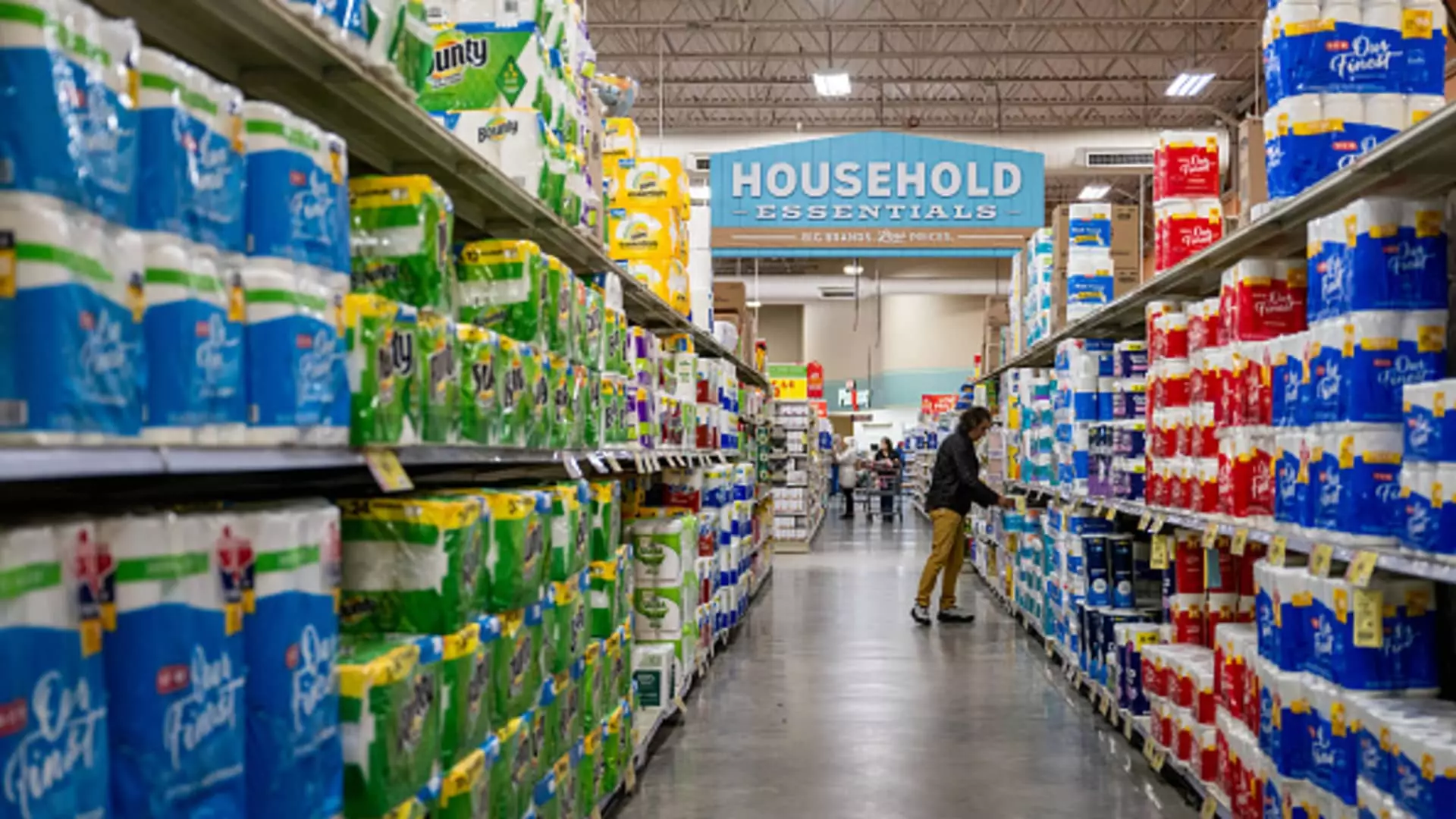As the Trump administration charges forward with its new tariff regime, daily Americans are set to notice the financial pinch. The strategy, purportedly aimed at revitalizing domestic industries and jobs, overlooks a fundamental truth: certain essential goods, from coffee to toilet paper, are simply not produced in sufficient quantities within our borders. The ripple effect of these tariffs speaks volumes about the administration’s disconnect from the realities faced by ordinary consumers and the broader implications for economic stability.
The goal of the incumbents may be admirable in its intention. However, in practice, the execution appears misguided and simplistic. Increasing tariffs on imported goods seems to assert a nationalistic mantra—America first—but it risks burdening consumers with higher prices for staples that they cannot avoid. When you consider that the U.S. heavily relies on imports for many basic commodities, such as bananas, cocoa, and cleaning supplies, the almost immediate consequences materialize: rising prices combined with limited options.
The Irony of Domestic Supply Chains
It is crucial to grasp the irony embedded in this “America First” policy. While its advocates tout a revival of American manufacturing, they frequently ignore the industry’s current landscape that hinges on international supply chains. Tom Madrecki, vice president of supply chain resiliency at the Consumer Brands Association (CBA), articulated this tension succinctly, highlighting the dilemma faced by U.S. companies that rely on something as ubiquitous as toilet paper. These companies have already optimized their operations, often sourcing essential materials from abroad that simply cannot be recreated domestically due to climatic and agricultural constraints.
For instance, more than 90% of oats milled in the U.S. come from Canada—an echo of agricultural shifts that have seen American farming focus narrowly on fewer crops. As tariffs apply undue stress on these imports, the consumer is left holding the bag, or in this case, paying more at the grocery store. This indicates an essential miscalculation. Instead of facilitating a flourishing domestic industry, the tariffs are set to drive prices swifter than American innovators can adapt to changes or new production methods.
The Unseen Cost of Tariff Policy
The impending increases aren’t just confined to food products like bananas and spices; they extend into the realm of household necessities. Imagine a simple trip to the supermarket becoming a stress-inducing exercise in budget management as prices for everyday items like diapers and lotions continue to rise. The Consumer Brands Association reveals a daunting truth: even commodities that people expect to be affordable are potentially at risk, and once price increases begin, they rarely revert to their original pricing.
Moreover, these tariffs signal an imminent threat to mid-level income households that grapple with the challenges of budgeting. While wealthier Americans may absorb higher prices with relative ease, the middle-class consumer faces a precarious existence. The backdrop of rising inflation combined with higher tariffs creates a scenario where imperceptibly, the middle class finds itself further squeezed, with less disposable income for the activities that enrich their lives.
Market Responses and the Path Forward
In the swirling chaos of these economic changes, market reactions can seem unpredictable. Stocks of consumer staple companies like Procter & Gamble and Coca-Cola made minor gains following the tariff announcement, leading investors to flee from riskier assets into the perceived safety of essential goods. Yet, this response should not be misconstrued as a sign of robust economic health; rather it reflects fears amid uncertainty.
Investors today must ask themselves: Is a tariff-driven economy sustainable or simply a house built on sand? What’s at stake is not merely the increased cost of coffee or the occasional luxury of vanilla, but the very fabric of the American economic standard, which hinges on our collective purchasing power.
While the intention of tariffs may be to safeguard American interests, the actuality is that they risk evaporating the affordability and accessibility of essential goods and services. As consumers, workers, and stakeholders in this economy, a more nuanced approach is essential—one that acknowledges the complexity of modern supply chains and the interconnectedness of global markets.


Leave a Reply